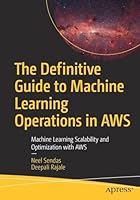
UNIX and Linux System Administration Handbook, 5th Edition
- Length: 1232 pages
- Edition: 5
- Language: English
- Publisher: Addison-Wesley Professional
- Publication Date: 2017-08-18
- ISBN-10: 0134277554
- ISBN-13: 9780134277554
- Sales Rank: #32082 (See Top 100 Books)
“As an author, editor, and publisher, I never paid much attention to the competition—except in a few cases. This is one of those cases. The UNIX System Administration Handbook is one of the few books we ever measured ourselves against.”
—Tim O’Reilly, founder of O’Reilly Media
“This edition is for those whose systems live in the cloud or in virtualized data centers; those whose administrative work largely takes the form of automation and configuration source code; those who collaborate closely with developers, network engineers, compliance officers, and all the other worker bees who inhabit the modern hive.”
—Paul Vixie, Internet Hall of Fame-recognized innovator and founder of ISC and Farsight Security
“This book is fun and functional as a desktop reference. If you use UNIX and Linux systems, you need this book in your short-reach library. It covers a bit of the systems’ history but doesn’t bloviate. It’s just straight-forward information delivered in a colorful and memorable fashion.”
—Jason A. Nunnelley
UNIX® and Linux® System Administration Handbook, Fifth Edition, is today’s definitive guide to installing, configuring, and maintaining any UNIX or Linux system, including systems that supply core Internet and cloud infrastructure.
Updated for new distributions and cloud environments, this comprehensive guide covers best practices for every facet of system administration, including storage management, network design and administration, security, web hosting, automation, configuration management, performance analysis, virtualization, DNS, security, and the management of IT service organizations. The authors—world-class, hands-on technologists—offer indispensable new coverage of cloud platforms, the DevOps philosophy, continuous deployment, containerization, monitoring, and many other essential topics.
Whatever your role in running systems and networks built on UNIX or Linux, this conversational, well-written ¿guide will improve your efficiency and help solve your knottiest problems.
Table of Contents
Chapter 1. Where to Start
Chapter 2. Booting and System Management Daemons
Chapter 3. Access Control and Rootly Powers
Chapter 4. Process Control
Chapter 5. The Filesystem
Chapter 6. Software Installation and Management
Chapter 7. Scripting and the Shell
Chapter 8. User Management
Chapter 9. Cloud Computing
Chapter 10. Logging
Chapter 11. Drivers and the Kernel
Chapter 12. Printing
Chapter 13. TCP/IP Networking
Chapter 14. Physical Networking
Chapter 15. IP Routing
Chapter 16. DNS: The Domain Name System
Chapter 17. Single Sign-On
Chapter 18. Electronic Mail
Chapter 19. Web Hosting
Chapter 20. Storage
Chapter 21. The Network File System
Chapter 22. SMB
Chapter 23. Configuration Management
Chapter 24. Virtualization
Chapter 25. Containers
Chapter 26. Continuous Integration and Delivery
Chapter 27. Security
Chapter 28. Monitoring
Chapter 29. Performance Analysis
Chapter 30. Data Center Basics
Chapter 31. Methodology, Policy, and Politics







